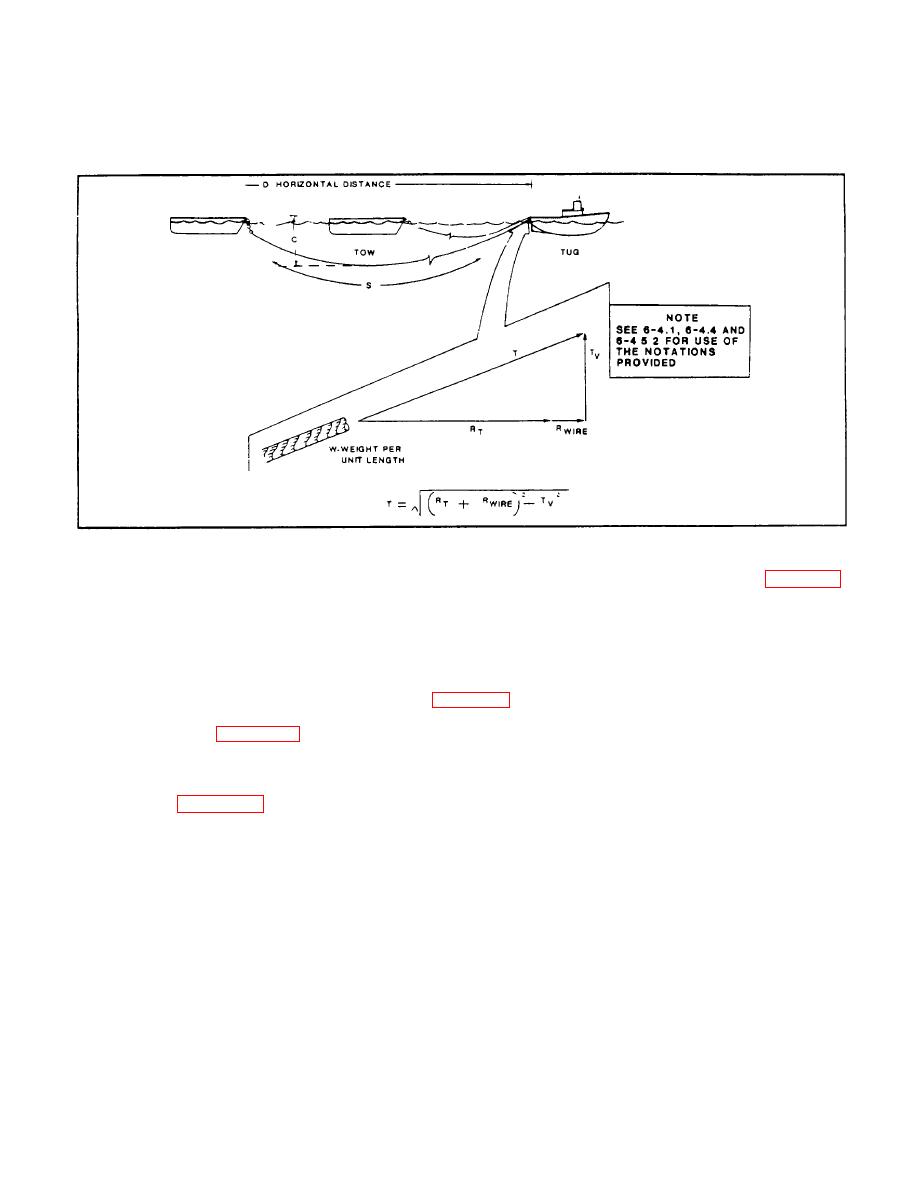
| Tweet |

Custom Search
|
|

|
||
 TB 55-1900-232-10
Figure 5-2. Towline Forces at Stern of Tow.
T1 is the steady or static component of the towline tension, (R + Rwire) as discussed in Paragraph 6-3.2 In Figure 5-3, T
T
1
20,000 pounds. T2 and T3 fluctuate such that each has an average value of zero and their long-range effect on towing
speed will be nil. Maximum towline tension occurs when T2 and T3 are additive.
T2 is a slowly varying component of the tension due to yaw or sheering of the tow-slow swinging of the towed vessel from
one side of the course line to the other-and surge, or slow change of span between the tug and towed vessel Since each
swing takes several minutes, T2 also takes several minutes to vary from its maximum to its minimum and is sometimes
called a "quasi-steady" tension. In the example shown in Figure 5-3, T varies between -3,000 and +3,000 pounds.
2
The example shown in Figure 5-3 assumes constant speed and could apply to a small tow compared to the size and
power of the tug. For large tows, where slow swings can take 10 minutes or more, and for the typical situation where the
tow ship's power setting is constant, the tug and tow both slow down to accommodate the increased tow resistance This
is especially true when the tow sheers off to one side A poorly-behaved tow, therefore, cannot be expected to attain the
speed predicted by Appendix G without a significant increase in tug power and hawser tension, neither of which may be
possible or wise.
Another aspect of the badly sheering tow is that it can apply a significant additional tension peak when it "fetches up" at
the end of each excursion to the side This may dictate a further, deliberate slowing to protect the towing gear, especially
if the towing machine is not in its automatic mode.
T3 is due to the wave-induced seakeeping motions of the tug and tow. It is a random process with typical half-periods,
the time taken to vary from maximum to minimum, of 1 to 8 seconds. T3 depends on the detailed dynamics of the
responses of tug, tow and towline to time-varying forces. Thus, T is called a "dynamic-tension" component of the
3
towline tension and must be considered.
Determination of maximum values for the three components of towline tension is
5-7
|
||
 |
||